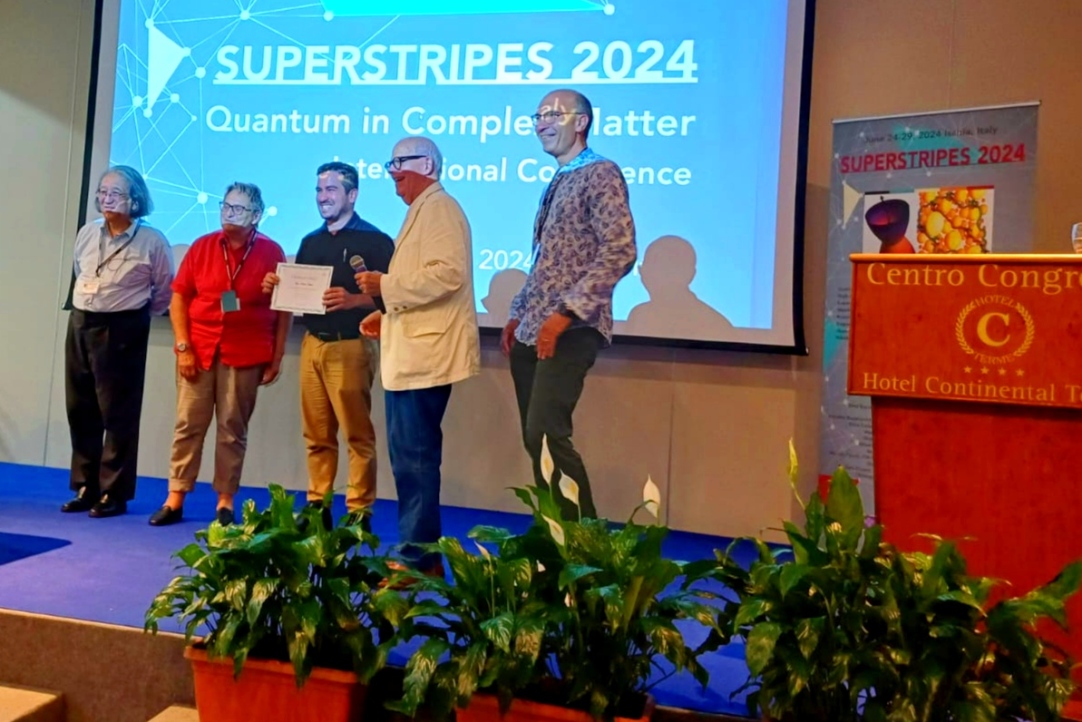The scientists of the Center made presentations on the results of their research on superconductivity in complex multicomponent systems during the International Scientific Conference SUPERSTRIPES
The Superstripes 2024 Conference (Ischia, Italy, June 24-29, 2024) continued the successful tradition of international scientific meetings started by the first Stripes Conference, held in Rome in 1996. The event is dedicated to the growing interest of the international scientific community in the emergence of new phenomena related to complexity in quantum matter. The goal of Superstripes 2024 is to promote the development of science and scientific culture at the highest level and unite world scientific leaders in the field of new achievements in topical topics of the science of quantum complex matter.

The presentation of the prestigious Fibonacci Award for the best work of a young scientist was one of the most significant events of the conference.
Dr.Tiago Teixeira Saraiva, a scientist at the Higher School of Economics, became the winner of the award for his scientific work, written in collaboration with a team of researchers from leading world universities (Higher School of Economics, MIPT, MISIS, Federal University of Pernambuco (Brazil), Sorbonne University (France)
The article "Intertype superconductivity in ferromagnetic superconductors: a phenomenological approach" (Authors: Alexey Vagov, Thiago T.Saraiva, Arkady Shanenko, Andrey Vasenko, Vasily Stolyarov, Jose Albino Aguiar and Dmitry Rodichev) was based on a study that the type of superconductivity can change with temperature if the superconductivity interacts with a ferromagnet.
https://publications.hse.ru/articles/866871848
In many pnictides the superconductivity coexists with ferromagnetism in an accessible range of temperatures and compositions. Recent experiments revealed that when the temperature of magnetic ordering T m is below the superconducting transition temperature T c, highly non-trivial physical phenomena occur. In this work we demonstrate the existence of a temperature window, situated between T m and T c, where these intrinsically type-II superconductors are in the intertype regime. We explore analytically and numerically its rich phase diagram characterized by exotic spatial flux configurations—vortex clusters, chains, giant vortices and vortex liquid droplets—which are absent in both type-I and type-II bulk superconductors. We find that the intertype regime is almost independent of microscopic parameters, and can be achieved by simply varying the temperature. This opens the route for experimental studies of the intertype superconductivity scarcely investigated to date.
